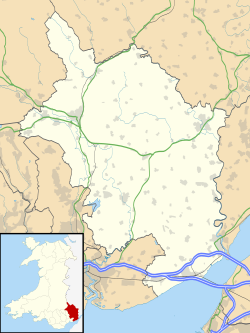This article includes a list of general references, but it lacks sufficient corresponding inline citations .(December 2013) |
Llanelly
| |
|---|---|
| Village and community | |
Location within Monmouthshire | |
| Principal area | |
| Country | Wales |
| Sovereign state | United Kingdom |
| Police | Gwent |
| Fire | South Wales |
| Ambulance | Welsh |
Llanelly (Welsh : Llanelli) is a village, community, and parish in the county of Monmouthshire, South East Wales. It formerly existed in the historic county of Brecknockshire. The population of the community and ward at the 2011 census was 3,899. [1] The Brecon Beacons National Park encompasses the parish and the surrounding area.


